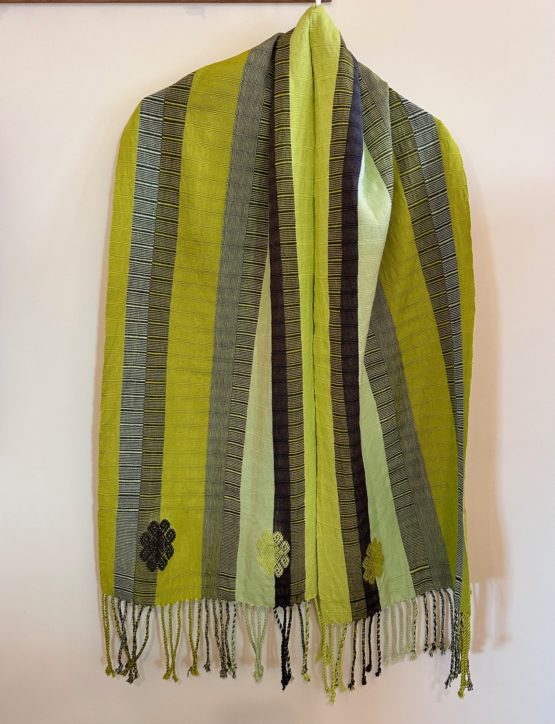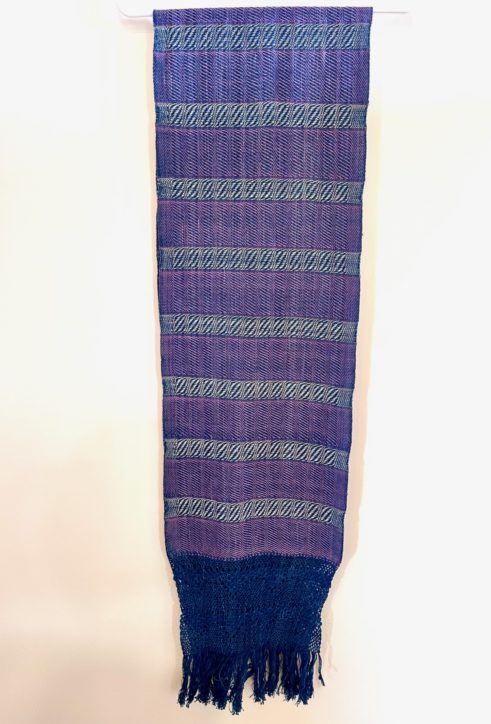We are committed to supporting Mexican artisans, especially women who work so hard to support their families to give them schooling, health care and nutritious food. Food insecurity is a big deal in remote villages. Access to local medical clinics is severely limited. There are extra costs for school books, tuition and required uniforms. It’s the women who, through their weaving, are able to earn extra income to supplement the basics that the men can provide through subsistence farming. That’s why your support is so important. Big thanks as we approach Thanksgiving, for all you have done and continue to do to enable Oaxaca Cultural Navigator to buy direct and outright from the makers, and not on consignment.
I’m returning to Oaxaca at the end of December and want to clear my inventory of many beautiful pieces before then. What better time than NOW to add some splash to your holiday dressing with these Pre- and Post-Thanksgiving Specials. We have some home goods, too. Many pieces deeply discounted. I’m listing 12 things here, with more to come.
How to Buy: Send an email to norma.schafer@icloud.com and tell me the item(s) you want to purchase by number, your email, your mailing address and which payment method you prefer: 1) Zelle bank transfer with no service fee; 2) Venmo or 3) PayPal each with a 3% service fee. I will send you a request for funds and then add on a flat rate $14 mailing fee. Happy to combine shipping if you buy more than one piece. These are one-of-a-kind. Note: Thank you for understanding that all sales are final. Please measure carefully.
See our Deeply Discounted Designer Baskets, too.

#1. Steel Grey Floral Blouse from Zinacantan, Chiapas, land of the flower greenhouses! This is a village in the highlands just beyond San Cristobal de Las Casas where elaborate floral embroidery decorates everything. Machine washable, cold water, gentle cycle. Hang to dry. 23″ wide x 29″ long. Wear out or tuck into pants or a skirt. Shimmering beauty. Was $85. Now $65.

SOLD. #2. Gunmetal Grey Floral Blouse from Zinacantan, Chiapas, land of the flower greenhouses! Great contrast between blouse fabric and embroidery. Elegant and casual comfort, too. Machine washable, cold water, gentle cycle. Hand to dry. 25″ wide x 29″ long. Was $85. Now $65.

#3, #4 and #5. Three beautiful pillow covers, 100% cotton and hand-woven on the back-strap loom in Chiapas. Reduced from $95 each to $45 each. The brown stripey is beautifully embroidered. The creamy one has traditional design motifs woven into the cloth using the supplementary weft technique.


#6. Embroidered Blouse, 100% cotton, From Tzintzuntzan, the ceremonial center of the pre-Hispanic Purepecha capital along the shores of Lake Patzcuaro, Michoacan. Here, the most astounding embroidery decorates blouses, shirts, and other wearable, telling stories of village life, including weddings and engagements. This blouse is from the most famous embroiderer of them all, Teofila Servin Barriga. Her work commands hundreds, even thousands of dollars! Blouse measures 22-1/2″ wide x 26″ long. $175.


#7. Embroidered Jacket, 100% cotton, from Tzintzuntzan, Michoacan, from Teofila Servin Barriga. Jacket measures 22″ wide x 26″ long and the sleeves are 24-1/2″ long from shoulder seam. Too long? Roll them up! $275.

SOLD. #8. From Venustiano Carranza, Chiapas, a handwoven black blouse with amazing brilliant supplementary weft design woven into the cloth. Wear a Heat-Tech T-shirt underneath for winter warmth and transition into spring and summer with this beautiful, lightweight cotton blouse. Measures 27″ wide x 25″ long. Was $95. Now $55.

SOLD #9. Adorn yourself with a handwoven accent scarf from Venustiano Carranza, Chiapas. A statement in holiday elegance. Was $85. Now $45.

#10. The Francisca Blouse, Purple Haze — all French Knots, intricate and completely made by hand, even the seams and hem! This one is a size LARGE, measuring 17″ wide from shoulder seam to shoulder seam and 28″ long. Sleeves are 3/4 length. Was $145. Now $95.

#11. The Francisca Blouse, Purple Haze — size EXTRA LARGE, measuring 19″ wide from shoulder seam to shoulder seam and 30″ long, with 3/4 length sleeves. Was $145. Now $95.

#12. Tlahuitoltepec black linen shirt jacket with cotton machine stitched embroidery. This embroidery is considered handmade because the seamstress guides the machine free-form! Measures 22″ wide x 26″ long in the front. The back panel of the jacket is 29″ long, designed to cover the tush. Sleeves are 23″ long from the shoulder seam. Was $175. Now $85.


#13. Chakira beaded bodice and fine smocking make this long-sleeved 100% cotton blouse from the mountains of Puebla state a knock-out. Measures 24″ wide x 27″ long. Sleeve length is 18″. Notice the chakira beading at the cuff. Neckline is adjustable with a delicate, handmade drawstring. Embroidered lace accents the bodice and the cuffs. These blouses sold in Santa Fe on the Plaza for $425. Now yours for $165.





















































